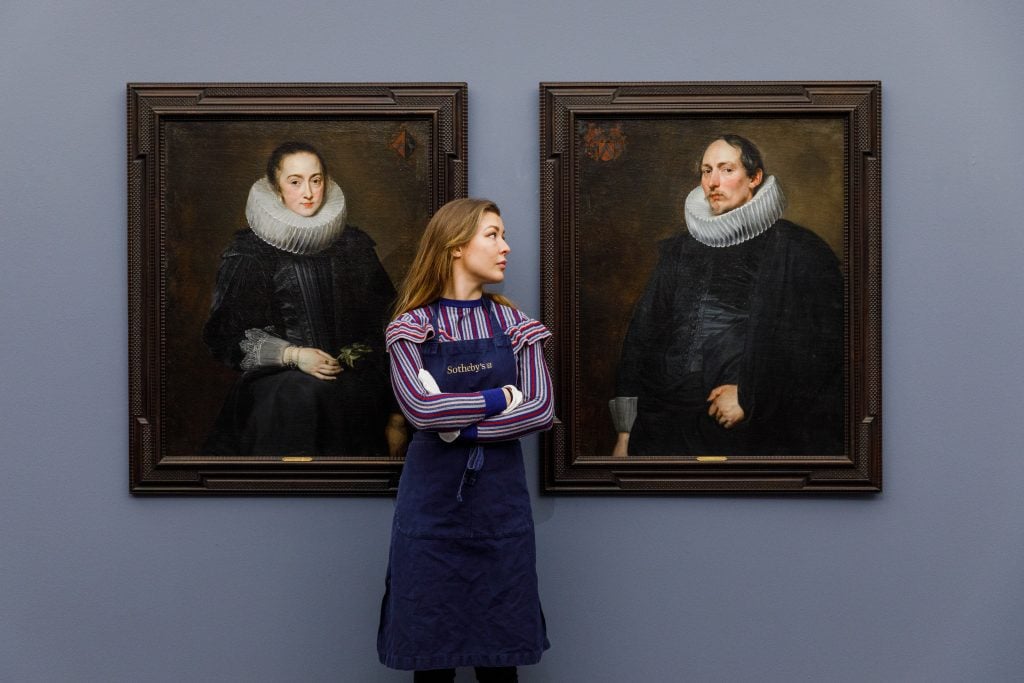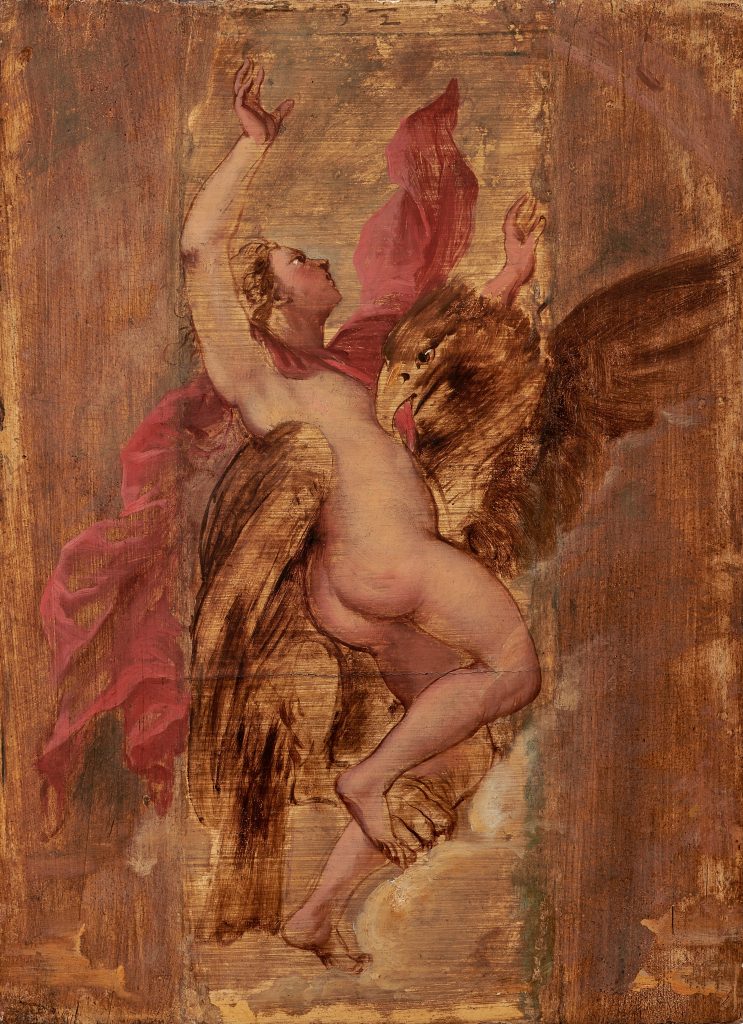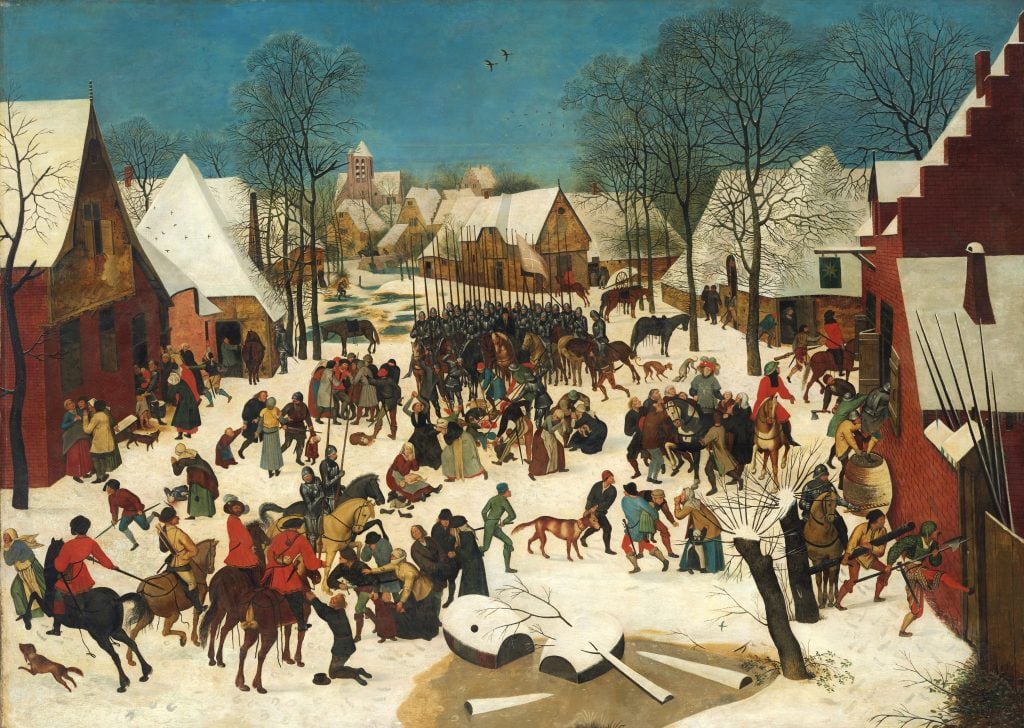Artnet News Pro
Christie’s and Sotheby’s Tepid London Sales Illustrate the Old Master Market’s Novel Problem: Too Much Supply, Too Little Demand
Sotheby’s outperformed its rival house as London kicked off Masters Week.

Sotheby’s outperformed its rival house as London kicked off Masters Week.

Jo Lawson-Tancred

A flurry of protracted bidding wars over Old Masters at Sotheby’s in London on Wednesday evening saw sales reach £18.9 million ($24.9 million).
This figure sat comfortably within the sale’s £15.5 million-to-£23.5 million ($20.4 million–$31 million) pre-sale estimate on the back of a healthy sell-through rate of 82 percent. Despite trouncing the £10.6 million ($13.9 million) made at the same sale last year, it still remains far off the £30.2 million ($39.8 million) achieved pre-pandemic in 2018.
The appetite was comparatively modest at Christie’s London on Tuesday, with a sell-through rate of 72 percent. The £10.4 million ($13.7 million) fetched overall fell short of the estimated £12.3 million-to-£18.6 million ($16.2 million–$24.6 million), and it was the first time since 2016 that the December sale brought in less than £20 million ($26.4 million).
Christie’s total was significantly bolstered by just two standout paintings, with top lot Pieter Brueghel the Younger’s Massacre of the Innocents selling for £2.4 million ($3.2 million), comfortably above its high estimate of £1.5 million ($2 million) (final prices include buyers’ premium, but pre-sale estimates do not). An early career portrait by El Greco, restituted to the heirs of Jewish collectors Julius and Camilla Preister, was snatched up for £1.2 million ($1.6 million).
Each sale had just one lot guaranteed, a crucifixion by the Master of Charles of Durazzo at Sotheby’s and, at Christie’s, Zoffany’s lively portrait of the Nugent family. Both sold for close to the low estimate, likely to their guarantors.

Sir Peter Paul Rubens, The Abduction of Ganymede. Courtesy Sotheby’s.
Sotheby’s welcomed more than 100 clients in the room, but the highest bids still came mostly by telephone. As expected, the top lot was a pair of austerely magnificent 1628 portraits of the married couple Maria Nutius and Jacob de Witte by Sir Anthony van Dyck. Acquired for £6.2 million ($8.2 million) by a telephone bidder, the works made good on the £4 million-to-£6 million estimate ($5.3 million–$7.9 million) to become the artist’s second highest price at auction, after £8.3 million ($11 million) was paid for a self-portrait in 2009. The pair were last sold publicly at Sotheby’s in 1976 for £38,000 ($50,173).
Mark Weiss, of Weiss Gallery, was far from surprised that these well-documented works were eagerly received, but pinpointed the “masterly bravura” and “characterful head” of De Witte as a reason why his portrait alone might “easily have commanded” as much as the pair actually made together. “It is unsurprising they performed better than most other lots, and confirms that the market remains very strong for the finest works.” The dealer added that he felt Sotheby’s had a “far better” selection of paintings for sale than Christie’s, as reflected in their respective sales totals.
Auction highlights included a tussle over a small but spirited oil sketch, The Abduction of Ganymede by Sir Peter Paul Rubens, between an online bidder and another in the room. The final price was £716,800 ($946,682), more than double the piece’s £300,000 ($396,188) low estimate. Another Flemish Baroque artist, Sebastiaan Vrancx, performed better than expected, bringing in £1.1 million ($1.4 million) for four paintings representing The Four Seasons (estimate: £600,000 to £800,000 / $692,462–$1 million).
Both Dutch and Flemish artists received “pronounced interest” from Russian-speaking collectors, Sotheby’s said in a post-sale release. These works fill several galleries at the Hermitage, thanks to the admiration of Catherine the Great.
Unsurprisingly then, prolific painter of the Dutch Golden Age, Jan Josefz. van Goyen, was quickly scooped up at both sales. At Sotheby’s, a charming wintry scene raised £239,400 ($316,133), while a pair of paintings portraying Summer and Winter went for £302,400 ($399,326) at its rival house. Some competition at Christie’s for a Van Goyen river landscape ended at £81,250 ($107,292) (estimate: £50,000-£70,000) ($66,000–$92,000).
Still lifes struggled to excite bidders, including those by woman artists. At Christie’s, fruit by the Italian artist Fede Galizia did not make its estimate of £250,000-to-£350,000 ($330,105–$462,147), despite setting a new auction record of $2.4 million in 2019. Flowers in a vase in the Dutch tradition by Rachel Ruysch, offered at Sotheby’s and estimated at £1.2 million-to-£1.8 million ($1.6 million–$2.4 million), only managed to sell post-auction, although a more modest miniature bouquet by the artist more than doubled its high estimate to make £390,100 ($515,095).
The Old Masters market may be oversupplied, but the 33 lots at Sotheby’s represented a wider geographic range than Christie’s long march of Dutch and Flemish masters. This appears to have paid off in terms of broadening buyer interest. Rounding off the sale was an eerie winterscape from 1909 by leading Norwegian artist Harald Sohlberg which went to an online bidder for £2.7 million ($3.6 million), far surpassing its £1.5 million ($2 million) high estimate.

Pieter Brueghel the Younger, Massacre of the Innocents. Courtesy Christie’s Images Ltd. 2021.
Meanwhile, Christie’s had anticipated that French artist Valentin de Boulogne’s Dream of Saint Joseph would be a highlight of their sale. Estimated at £1.2 million-to-£1.8 million ($1.6 million–$2.4 million), it failed to attract a buyer. Boulogne has in recent years gained institutional recognition as a follower of Caravaggio, but a similarly moving chiaroscuro rendering of Saint Bartholomew by Jusepe de Ribera from the same period also failed to sell at Sotheby’s.
Both auction houses had, notably, hoped that large sketches by Constable would be among their top lots. Each was made in preparation for major museum works; at Christie’s, Salisbury Cathedral from the Bishop’s Ground (1823) was a study for the painting at the Huntington in San Marino and a finished version of The Glebe Farm, offered by Sotheby’s, is at the Tate. Neither sketch sold, both falling just £100,000 ($132,000) short of their estimates.
All hope for Constable was not lost at Sotheby’s, however, where another two of his paintings doubled their high estimates. Other British artists also performed well at Sotheby’s. A view of Cilgerran Castle, Wales by Joseph Mallord William Turner fetched £1 million ($1.3 million), doubling its high estimate, as did Samuel Scott’s View of Westminster Bridge. Over at Christie’s, however, works by William Ashford, Thomas Gainsborough and David Wilkie all achieved hammer prices at or below their low estimates.
Successfully outperforming expectations at Christie’s instead were French marble sculptures, including a 19th century Thalia which sparked a bidding war and sold for £212,500 ($280,287). This echoed some of the enthusiasm shown earlier on the same day at Sotheby’s London’s sale of the Hamilton Aphrodite. Dating from the 1st or 2nd century A.D, the exceptional sculpture went to an Asian collector for £18.6 million ($24.5 million). It had last been seen at auction in New York in 1949, and this latest triumph has set a new auction record for ancient marble sculpture. With four sales still to come, the statue has helped Sotheby’s London amass £54 million ($71.6 million) so far at Masters Week.